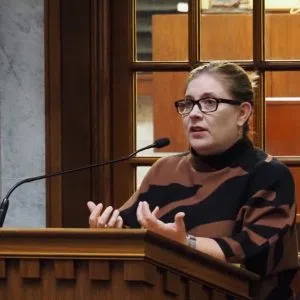INDIANAPOLIS – An interim land use task force set its sights on food insecurity on Tuesday — recommending legislation to make it easier for Hoosiers to qualify for food assistance, fund transportation or delivery for their groceries, and more.
Lawmakers and laypeople representing various industries additionally approved more than three dozen recommendations on zoning, farmland preservation, infrastructure/redevelopment incentives, housing assistance, health care access, and beyond.
About one in every 10 Indiana residents did not have consistent access to enough food in 2021, according to the food bank network Feeding America — on par with the national average.
That’s more than 700,00 Hoosiers, according to Feeding Indiana’s Hungry Executive Director Emily Weikert Bryant. But only about 40% are income-eligible for the federally-funded Supplemental Nutrition Assistance Program (SNAP) — and even fewer participate. SNAP is better known as food stamps.
According to the Indiana Family and Social Services Administration, many don’t apply because the process is “difficult and burdensome” compared to the benefits: $6.45 per person per day per day in September.
Applicants must make less than a pre-tax and a post-tax income maximum, for example, and must have less than $5,000 in assets.
“In Indiana, for SNAP applicants, we exempt their house, the cars they use to get to work (and) a lot of retirement funds … because you can’t touch them,” Weikert Bryant said. “But it’s essentially penalizing families who have a bank account with more than $5,000 in it — which is contrary to what we want. We want people to be able to have that cushion.”
And those who get into the program can struggle to access grocery stores and other vendors. SNAP can’t be used for transportation or delivery.
See the full story here.






